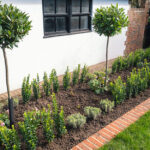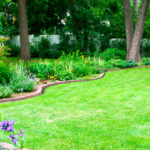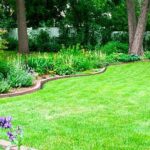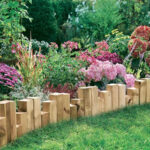Garden edging is an essential element in creating a well-defined and polished look for any outdoor space. Not only does it help to separate different areas of the garden, but it also adds structure and visual interest to the overall design. There are countless options available when it comes to garden edging, from traditional materials like bricks and stones to more creative and modern alternatives.
One classic option for garden edging is using bricks or stones. These materials are durable and versatile, allowing for straight or curved lines to be easily achieved. Bricks and stones can be laid in a variety of patterns, such as stacked vertically or laid horizontally, to create a unique and eye-catching border for flower beds or pathways.
For a more natural and rustic look, consider using wood as garden edging. Wooden logs or planks can be laid horizontally or vertically to create a defined border for garden beds or paths. Wood can also be stained or painted to match the overall aesthetic of the garden, adding a touch of warmth and charm to the space.
If you’re looking for a modern and sleek option for garden edging, consider using metal materials such as steel or aluminum. Metal garden edging is durable, weather-resistant, and easy to install, making it a popular choice for contemporary outdoor spaces. Metal edging can be bent and shaped to create clean, crisp lines that add a sophisticated touch to any garden design.
For a more whimsical and playful approach to garden edging, consider using unconventional materials like recycled glass bottles or ceramic tiles. These colorful and unique options can add a pop of personality to the garden while also being eco-friendly. Arrange the bottles or tiles in a row or stack them vertically to create a one-of-a-kind border that will surely be a conversation starter.
Another creative option for garden edging is using plants themselves as a natural border. Low-growing plants like herbs, succulents, or ground covers can be planted along the edge of garden beds or pathways to create a soft and seamless transition between different areas of the garden. This living edging not only adds beauty and texture to the space but also helps to define and protect the garden from unwanted intruders.
When choosing garden edging ideas, consider the overall style and theme of your outdoor space, as well as the practicality and maintenance requirements of the materials. Whether you opt for a traditional, modern, or eclectic approach to garden edging, the key is to create a cohesive and well-designed border that enhances the beauty and functionality of your garden. With so many options available, the possibilities for creative and unique garden edging ideas are endless.
















